| View previous topic :: View next topic |
| Author |
Message |
Bob Carnein
Joined: 22 Aug 2013
Posts: 354
Location: Florissant, CO



|
 Posted: May 05, 2025 12:41 Post subject: Quartz Twins Posted: May 05, 2025 12:41 Post subject: Quartz Twins |
|
|
Considering the great recent "Rocks & Minerals" articles by Carl Francis and Pete Richards on quartz twins, I will post a few specimens from my collection.
| Mineral: | Quartz |
| Locality: | | Crystal Peak area, Teller County, Colorado, USA |  |
|
| Dimensions: | 9.6x3x2.5 cm |
| Description: |
| Smoky quartz, Left-handed Dauphine twin |
|
| Viewed: |
382 Time(s) |
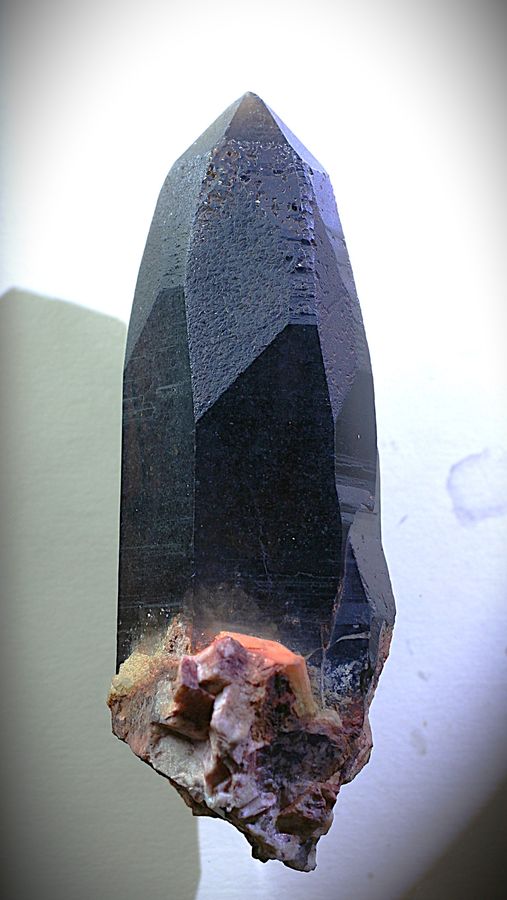
|
| Mineral: | Quartz |
| Locality: | | Switzerland |  |
|
| Dimensions: | 7.2x3.5x2.8 |
| Description: |
| Right--handed Dauphine twin from an unknown Swiss locality. This is a bit odd, in that the crystal exhibits only 2 trapezohedral x faces--one at the "upper right" corner of the front-facing prism face and the other in the "middle" of that prism face, at a suture line. |
|
| Viewed: |
379 Time(s) |
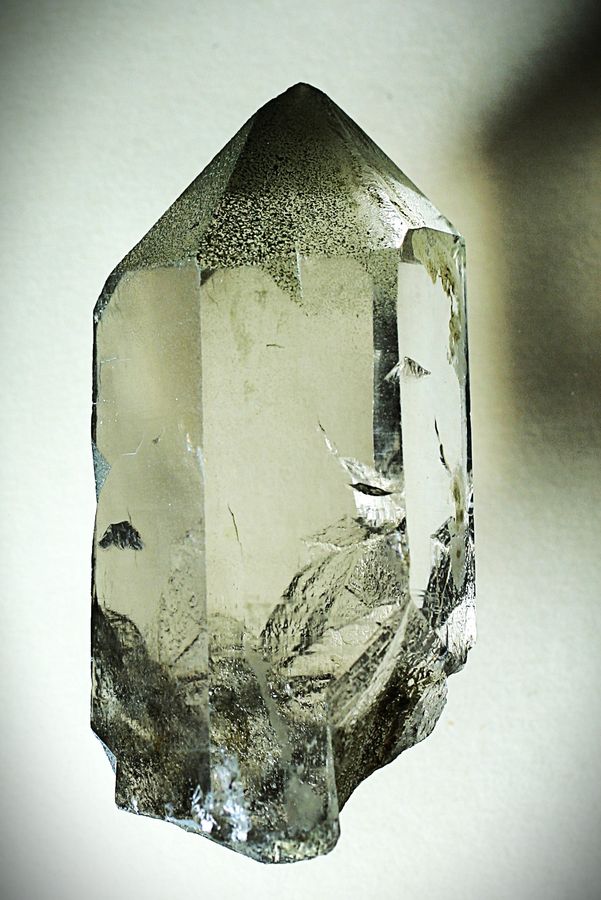
|
| Mineral: | Quartz |
| Locality: | | Switzerland |  |
|
| Dimensions: | 7.2x3.5x2.8 |
| Description: |
| Closer view of x faces on a quartz crystal from an unknown Swiss locality |
|
| Viewed: |
378 Time(s) |
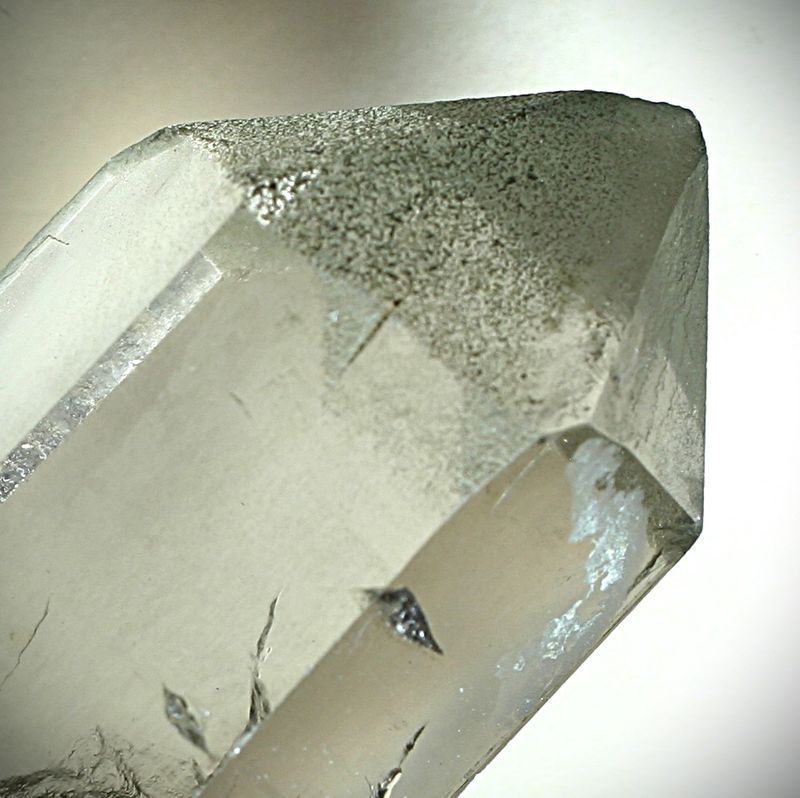
|
| Mineral: | Quartz |
| Locality: | | Gamsberg area, Windhoek District, Khomas Region, Namibia |  |
|
| Dimensions: | 4.6x2.1x1.3 cm |
| Description: |
| Left-handed Dauphine twin exhibiting both repeating x faces and repeating s faces. Striations on the s faces all point downward toward adjacent x faces (see close-ups below). |
|
| Viewed: |
381 Time(s) |
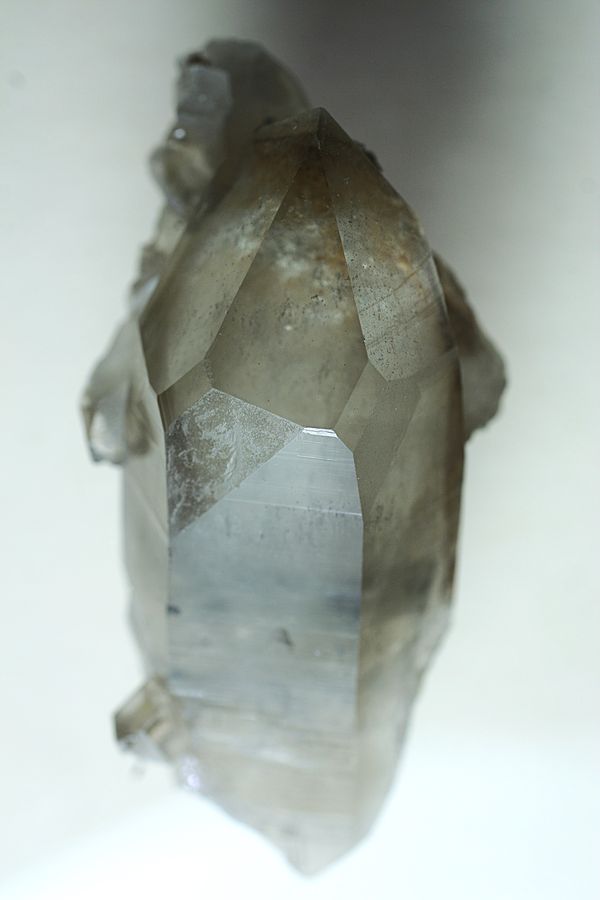
|
| Mineral: | Quartz |
| Locality: | | Gamsberg area, Windhoek District, Khomas Region, Namibia |  |
|
| Dimensions: | 4.6x2.1x1.3 cm |
| Description: |
| Close-up showing s face exhibiting striations pointing downward toward adjacent x face. |
|
| Viewed: |
382 Time(s) |
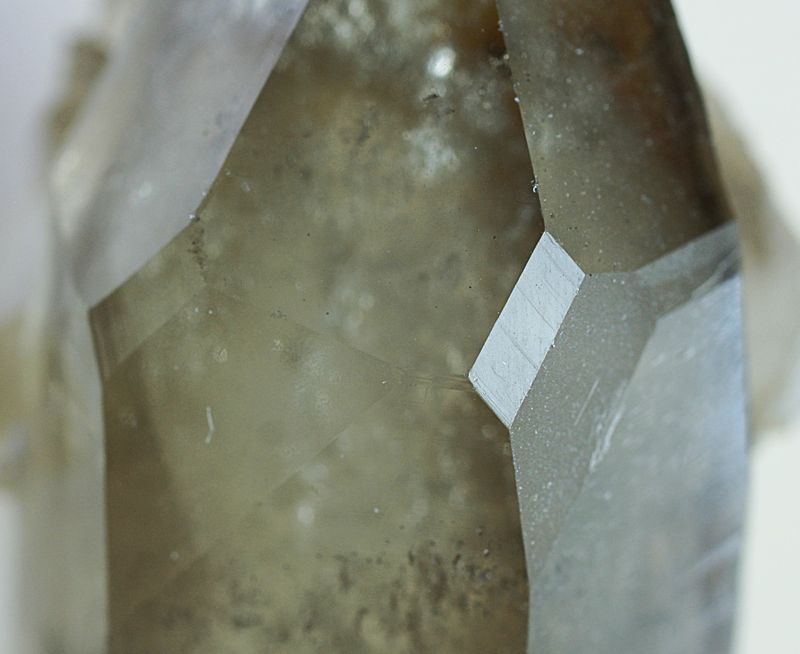
|
| Mineral: | Quartz |
| Locality: | | Gamsberg area, Windhoek District, Khomas Region, Namibia |  |
|
| Dimensions: | 4.6x2.1x1.3 cm |
| Description: |
| Close-up of another s face with striations pointing downward toward adjacent x face. |
|
| Viewed: |
380 Time(s) |
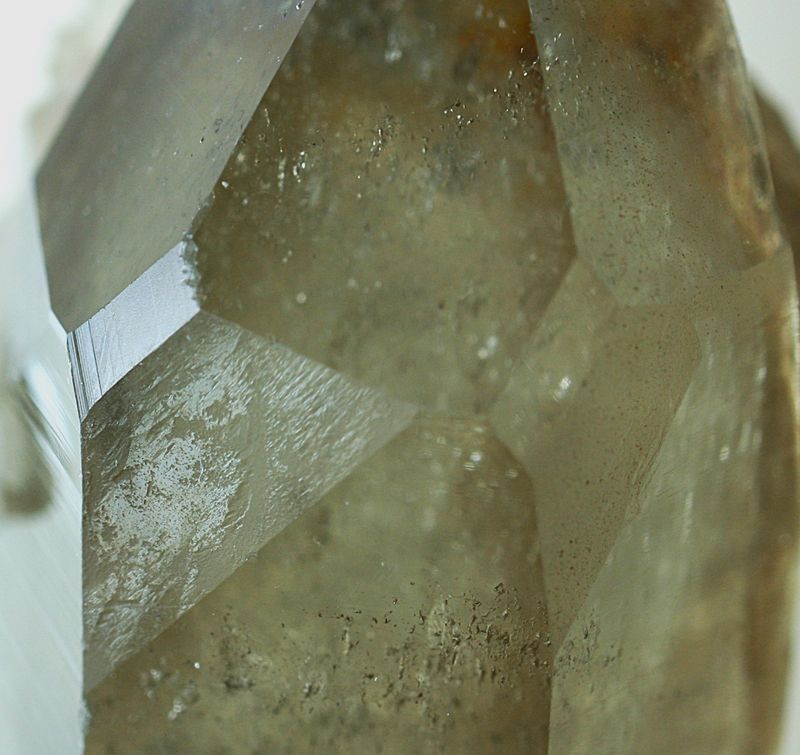
|
| Mineral: | Quartz |
| Locality: | | Mount Malosa, Zomba District, Malawi |  |
|
| Dimensions: | 4.3x1.6x1 cm |
| Description: |
| Smoky quartz crystal with unknown inclusions. This crystal exhibits Brazil twinning, as shown by symmetric repitition of x faces on both sides of front prism face. See close-up below. |
|
| Viewed: |
380 Time(s) |
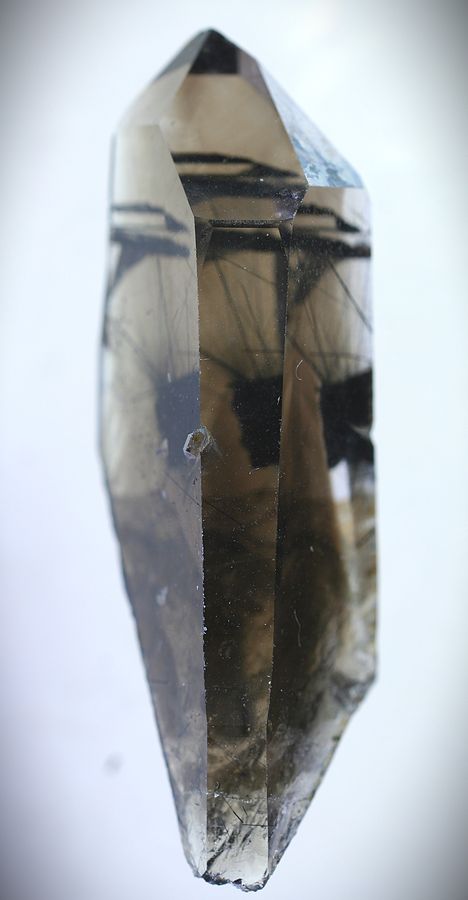
|
| Mineral: | Quartz |
| Locality: | | Mount Malosa, Zomba District, Malawi |  |
|
| Dimensions: | 4.3x1.6x1 cm |
| Description: |
| Close-up of previous photo, showing symmetrical repitition of x faces. It appears that the x faces are each actually 2 faces; perhaps a more adept crystallographer can tell me what the "extra" faces are? |
|
| Viewed: |
380 Time(s) |
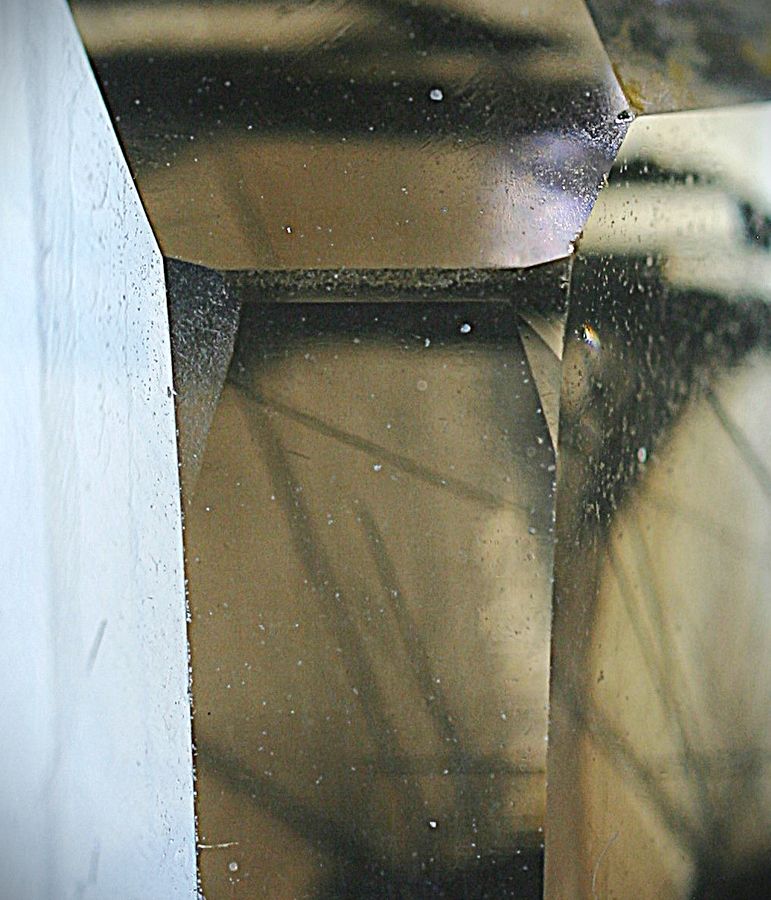
|
| Mineral: | Quartz |
| Locality: | | Hunter Canyon, Huachuca Mountains, Hartford District (Huachuca Mountains District), Cochise County, Arizona, USA |  |
|
| Dimensions: | 3.9x2.3x1.1 cm. |
| Description: |
| According to the person I bought this from, this odd little crystal is from Hunter Canyon, Huachuca Mts., Arizona. Although I suspect it's a contact Dauphine twin, I am not certain and would appreciate comments. Close-up shows very odd distribution of faces around a "notch" at the contact between the two twin halves. |
|
| Viewed: |
379 Time(s) |
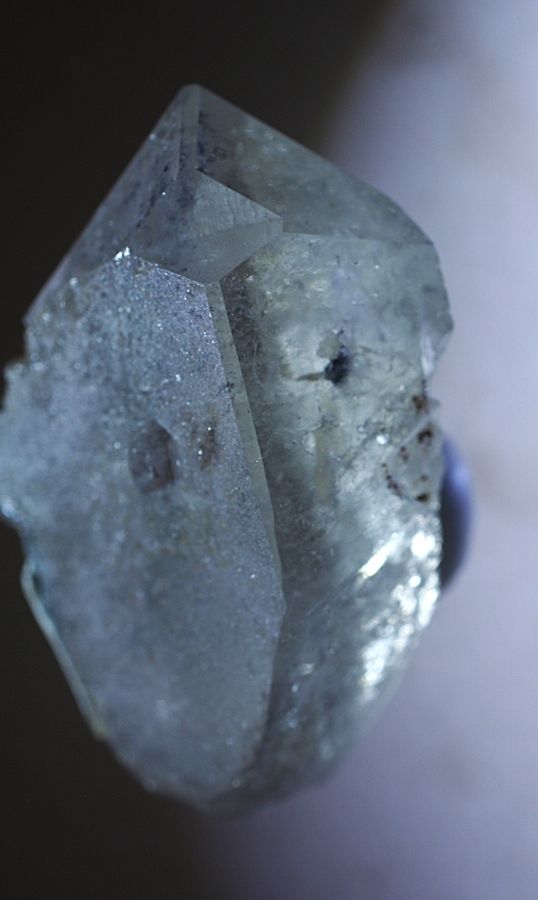
|
| Mineral: | Quartz |
| Locality: | | Hunter Canyon, Huachuca Mountains, Hartford District (Huachuca Mountains District), Cochise County, Arizona, USA |  |
|
| Dimensions: | 3.9x2.3x1.1 cm. |
| Description: |
| Close-up of previous photo, showing "notch" separating two twin halves and odd distritution of adjoining faces. |
|
| Viewed: |
381 Time(s) |
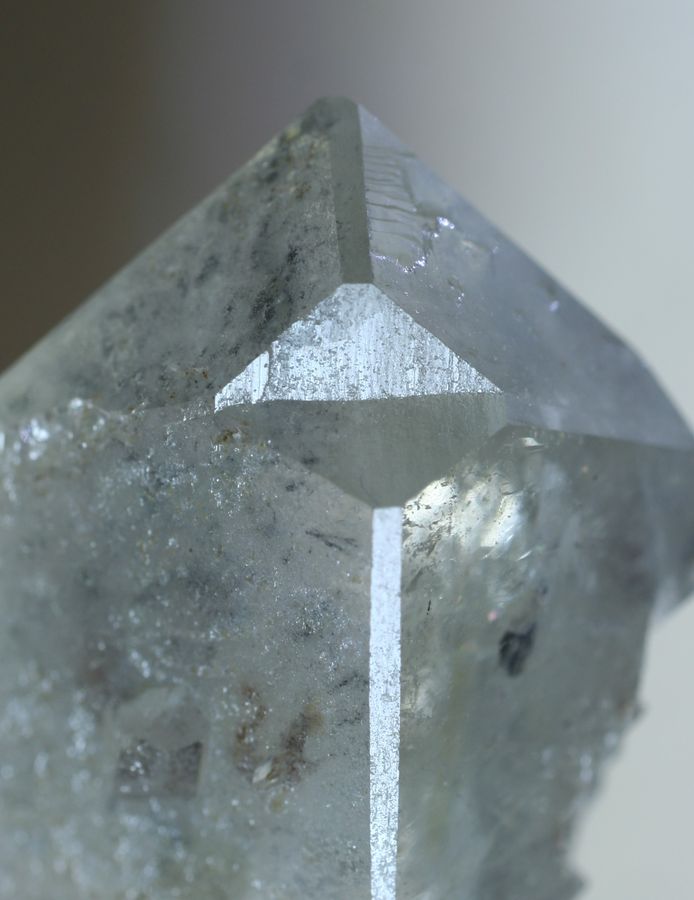
|
|
|
| Back to top |
|
 |
Bob Morgan
Joined: 18 Jan 2018
Posts: 250
Location: Savannah, Georgia



|
 Posted: May 05, 2025 22:27 Post subject: Re: Quartz Twins Posted: May 05, 2025 22:27 Post subject: Re: Quartz Twins |
|
|
'Some really nice crystals! - particularly the first from Colorado and the Namibian one. It's nice to see you have an interest in crystal morphologies.
Your crystal with two 'x' faces on the same prism face that are oriented the same way does not show Dauphene twinning. I'm guessing the suture is not a twin boundary but the beginning of a block split. It's a 'cool' feature.
I have a few crystals from Malawi that have the same appearance of Brazil Law twinning as yours. The shapes are that of 'x' faces on both sides of the prism face, but try as I may to make them show Brazil twinning they are just too different. One will have a smooth face with sharp features. The other always has surface pitting. I think this is what Rykart would consider 'x' and '-x' faces.
Your Arizona crystal is really interesting. It could be a vertical twin which would be really odd - like a 180 degree rotation around a c-axis, thus a Dauphene twin. Or it could be just an odd notch at the crystal tip. Is there any indication of twin boundaries extending down from the notch corners? If there are rounded triangular face features on the rhombohedral faces, it may be possible to read whether the faces are 'r' or 'z' which could be a way of discerning whether there is Dauphene twinning or not.
Carl and Pete's article in Rocks and MInerals really covers the subject well and will be a reliable guide for all. May more find the pleasure you've had looking again at your well chosen specimens.
|
|
| Back to top |
|
 |
Pete Richards
Site Admin
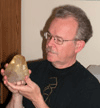
Joined: 29 Dec 2008
Posts: 843
Location: Northeast Ohio



|
 Posted: May 07, 2025 08:22 Post subject: Re: Quartz Twins Posted: May 07, 2025 08:22 Post subject: Re: Quartz Twins |
|
|
Thanks for posting some very interesting crystals!
Bob Morgan made some good comments, with which I agree. I will add some additional thoughts, hopefully helpful.
I want to try to make a general point about crystal forms, their Miller indices, and letters attached to the forms - specifically the face(s) we call x, Miller indices of the form being {51-61}. The Miller indices specify the orientation of the face, or faces of the form, with respect to the crystal axes. These are constant for a given mineral and a given form. When a face like x intersects another face like the prism, the crystal edge that results also has a fixed orientation between these two faces. The edge between a x face and the prism face adjacent to it is always the same (assuming that the prism is strictly parallel to the c-axis, not tapered inward either because of striations or because it is not strictly a prism). Consequently, the angle between this edge and the edge of the prism with the adjacent prism is also constant. There are many other forms for quartz, and lots of them make triangles between the prism faces and the rhombohedral termination faces. But the triangles have different shapes – different angles. Only one of them belongs to x faces. Other modifying faces that might be mistaken for x faces may not reliably indicate the hand of the crystal, or even twinning (especially if faces that appear to belong to one form actually belong to two different forms).
The crystal from Namibia is a fine example of x faces. Their repetition on successive corners indicates a Dauphiné twin. Assuming they really are x faces, they (along with the s face above them) indicate a left-handed crystal, as Bob Carnein says. The striations on the s faces are not always seen, and these are very well displayed.
The smoky quartz crystal from Colorado also shows twinning by repetition of faces. One could question whether they are x faces – the angle of the edge with the prism looks a little small, but the prism faces also seem to taper inward a bit. If we accept them as x faces, they indicate a left-handed crystal, as Bob says.
For the crystal from Switzerland with the chlorite and the two x faces on the same prism face, Bob Morgan’s comment is right on. This face has one part slightly out of alignment with the other, and an x face has developed in the equivalent position on each part. This indicates a right-handed crystal, but indicates nothing about twinning.
The crystal from Malawi is a different matter. These are not x faces – the angle with the prism is far too acute. Bob Morgan is also right to question whether they are faces of the same form, in which case they would indicate Brazil twinning. If they belong to two different forms no such conclusion about twinning can be made. The difference in etching of the two paired faces calls twinning into doubt.
Bob Carnein saved the best for last! This little crystal from Hunter Canyon is a real puzzler. I am not sure where the c axis is, but I suspect that it is basically horizontal, particularly in the last photo. In this case, the two narrow parallel-edged faces are probably prism faces and the big faces left and right are faces of the termination. Then the presumed twin plane would be basically horizontal, but tilted down from front to back. Reflections suggest that the bottom narrow face may be parallel to the squat triangular face on the top half. Is this true? Is it also true of the equivalent pair of faces, the narrow one on top and the triangle on the bottom half? If so, the entire prisms and the two c axes are parallel. Perhaps this is actually a parallel growth of two crystals in the mode of a contact Dauphiné twin, but it could also just be a simple parallel growth – a most unusual single crystal. A lot of careful study, including measuring some interfacial angles, might well be required to figure this one out. Can any striations be identified? They might help identify the prism faces and establish the orientation of the crystal.
| Mineral: | quartz |
| Description: |
| Crystal drawings to compare the geometry of an x face with that of a different modifying face |
|
| Viewed: |
146 Time(s) |
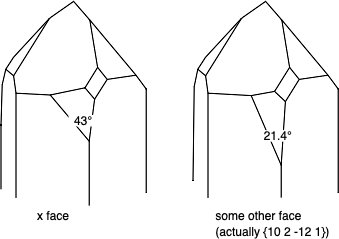
|
_________________
Collecting and studying crystals with interesting habits, twinning, and epitaxy |
|
| Back to top |
|
 |
Bob Carnein
Joined: 22 Aug 2013
Posts: 354
Location: Florissant, CO



|
 Posted: May 07, 2025 09:39 Post subject: Re: Quartz Twins Posted: May 07, 2025 09:39 Post subject: Re: Quartz Twins |
|
|
| Thanks so much to Bob and Pete for their insights. My top priority is clearing away 16 inches of fresh snow, but when I finish, I'll check some of the questions. In the meantime, I appreciate the comments about the crystal from Malawi. I noticed the difference but was "wishful thinking" about a Brazil twin. Gotta keep searching, I guess.
|
|
| Back to top |
|
 |
Roger Warin

Joined: 23 Jan 2013
Posts: 1232



|
 Posted: May 07, 2025 15:10 Post subject: Re: Quartz Twins Posted: May 07, 2025 15:10 Post subject: Re: Quartz Twins |
|
|
Indeed, Bob, Pete, what a wonderful lesson!
As I have two specimens of Japan twin, habit from La Gardette, I am trying to write a general article. I think I am being presumptuous, please forgive me and correct my future message.
In fact, the last specimen shown (Hunter Canyon) is surprising.
I doubt that it is a Dauphiné twin, formed by contact, with an acute angle.
Can't we detect the m faces of the prism by their oscillating crystallization between the m prism and the r and z rhombohedra?
There is little chance of finding a Dauphiné twin by contact, as it is a twin with parallel axes. There is no energy potential barrier between the two. It can repeat itself during growth without any hindrance. It is chance that leads the dance.
The one I highlighted on my specimen is a notable exception.
It may have formed because it was the growth of a new crystal after a period of growth arrest. It is a parallel-axis growth.
I gave this specimen to Professor F. Hatert for the Cesàro Museum at the University of Liège.
I'm not sure he realizes the importance of this gift.
|
|
| Back to top |
|
 |
Herwig
Joined: 04 Jan 2016
Posts: 38
Location: Hasselt


|
 Posted: May 07, 2025 23:40 Post subject: Re: Quartz Twins Posted: May 07, 2025 23:40 Post subject: Re: Quartz Twins |
|
|
Dear Roger,
I have the impression that your message is missing a photo.
If so, please post the photo of your specimen.
Thank you.
Cheers, Herwig
|
|
| Back to top |
|
 |
|





